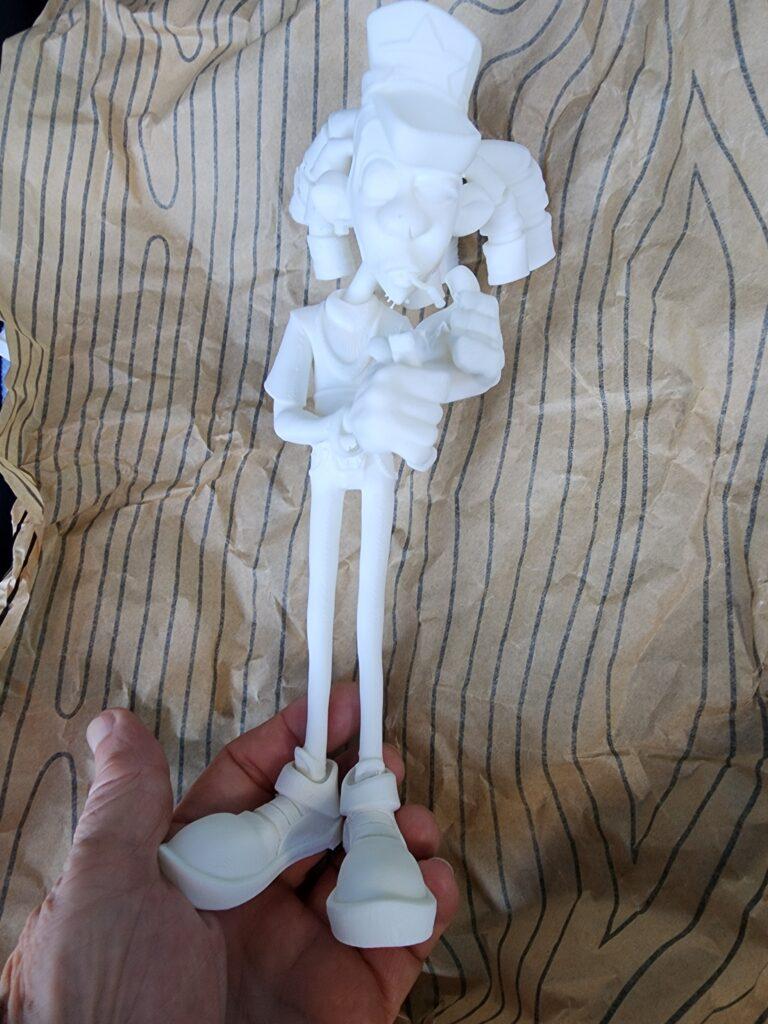
Learn how to go from digital design to flawless 3D print with this beginner-friendly guide. Master slicer settings, bed leveling, first layers, and finishing techniques for professional results.
3D printing is an exciting journey that starts with an idea and ends with a physical object you can hold in your hand. But anyone who has ever wrestled with clogged nozzles, warped prints, or layer shifts knows that the path from digital model to flawless masterpiece isn’t always smooth. The good news? With the right approach, patience, and a clear process, you can dramatically increase your chances of success.
This guide takes you through the step-by-step workflow—from preparing your model to the finishing touches—that transforms raw designs into polished, professional-quality prints. Whether you’re a beginner or a hobbyist looking to level up, you’ll find practical insights you can apply to your next project.
Step 1: Start with a High-Quality Model
Every successful 3D print begins with a well-designed model. If you’re creating your own, make sure the geometry is clean, watertight, and free of unnecessary complexity. Holes, overlapping faces, or non-manifold edges can confuse your slicer and lead to printing issues.
Not designing from scratch? Many great models are available on repositories like Thingiverse, Printables, or MyMiniFactory. Just remember: the higher the quality of the STL or OBJ file, the smoother your printing experience will be.
Step 2: Choose the Right Slicer Settings
Your slicer is where the digital becomes physical—it translates your model into precise instructions for your printer. This stage can make or break your final result.
Key slicer settings to master:
- Layer height: Lower heights (0.1mm) deliver smoother details, while higher ones (0.2–0.3mm) print faster.
- Infill: Dense infill strengthens your part but increases print time. Balance strength and speed by using 15–25% of your total strength for most projects.
- Supports: Enable only where necessary. Proper placement saves you from messy cleanup later.
- Print speed and temperature: Match these settings to your filament type. PLA, PETG, ABS, and others all behave differently.
Experimentation here pays off—one tweak can mean the difference between a failed print and a flawless one.
Step 3: Prepare Your Printer
Even the best digital file won’t succeed if your printer isn’t ready. Start with the basics:
- Level the bed: Manual or automatic leveling ensures the first layer adheres properly, setting the tone for the whole print.
- Clean the build surface: Dust, oil, or leftover filament can cause adhesion failures.
- Check your nozzle and filament path: A clogged nozzle or tangled spool can ruin hours of work.
Think of this step as tuning an instrument before a concert—it’s the quiet preparation that leads to perfect performance.
Step 4: Nail the First Layer
In 3D printing, the first layer is everything. If it sticks well, you’re already halfway to success. Adjust your Z-offset so that the filament is squished slightly into the bed, forming a smooth, even line. Too high, and the filament won’t stick. Too low, and you risk clogging or scraping the bed.
Many hobbyists swear by using a brim or raft to improve adhesion for tricky models. Don’t be afraid to use these aids until you’re confident that your first layers are rock-solid.
Step 5: Monitor and Troubleshoot Early
The first 10–20 minutes of a print are the most critical. Watch carefully for problems such as:
- Edges lifting (warping)
- Filament not sticking (poor adhesion)
- Extruder grinding or skipping
Catching issues early saves wasted time and material. Once your print has a stable base, you can relax a bit and let the printer do its job.
Step 6: Post-Processing for Perfection
A flawless print doesn’t always end when the printer stops. Post-processing can elevate your model from “good” to “professional.”
- Support removal: Use pliers, cutters, or a heat gun to carefully detach supports without damaging your print.
- Sanding and smoothing: Start with coarse sandpaper and work your way up for a polished finish.
- Priming and painting: For artistic projects, a coat of primer followed by acrylic paints makes prints pop.
- Special treatments: PLA can be smoothed with sanding and filler primer, while ABS can be vapor-smoothed with acetone.
These finishing touches are where your creation truly becomes a masterpiece.
Step 7: Learn from Every Print
Not every print will be perfect—and that’s okay. Each attempt teaches you something new about your printer, the materials used, and the settings. Keep a small notebook or digital log to track what worked and what didn’t. Over time, you’ll develop an instinct for dialing in flawless prints faster.
Frequently Asked Questions
How do I get a smooth first layer in 3D printing?
Achieving a smooth first layer begins with proper bed leveling and the correct Z-offset. The nozzle should be close enough to the build plate to gently squish the filament, but not so close that it scratches or blocks extrusion. Make sure the bed is clean and free of oils or dust, as even small particles can affect adhesion.
You can also improve results by:
- Preheat the bed and nozzle to the correct temperatures for your filament.
- Slowing down the first layer print speed for better precision.
- Using a brim or raft to help with adhesion on tricky prints.
When dialed in correctly, your first layer will appear as a smooth, even sheet of plastic—setting the foundation for a flawless print.
Why is my 3D print warping?
Warping happens when the bottom layers of your print cool and contract too quickly, causing edges to lift off the bed. Common causes include printing with materials like ABS without a heated enclosure, poor bed adhesion, or an uneven build surface.
To reduce warping:
- Use a heated bed and keep it at the recommended temperature for your filament.
- Add adhesion aids like glue stick, PEI sheets, or specialized adhesives.
- Enclose your printer to keep drafts and temperature fluctuations away.
What’s the best slicer for beginners?
For most beginners, Ultimaker Cura is the go-to slicer. It’s free, user-friendly, and offers preconfigured profiles for popular printers and filaments. If you want more advanced control later, slicers like PrusaSlicer and Bambu Studio provide deeper customization without being overwhelming.
If your printer came with a recommended slicer, start there—it’s usually optimized for your machine. Once you’re comfortable, experimenting with other slicers can help you unlock new features and fine-tune your results.
How can I make my 3D prints stronger?
Strength depends on both design and slicer settings. Increasing infill density and using stronger infill patterns (like grid or gyroid) makes parts more durable. Adjusting wall thickness and layer height also improves strength.
Material choice matters too:
- PLA is easy to print but more brittle.
- PETG balances flexibility and strength.
- ABS or Nylon are ideal for functional, load-bearing parts.
Post-processing methods, such as annealing, can further enhance your prints if needed.
Mastering the Art of 3D Printing
From model design to post-processing, every step in the 3D printing workflow contributes to the final result. With practice, patience, and a methodical approach, you’ll find yourself producing prints that not only look good but also perform beautifully in real-world applications.
Remember: 3D printing is as much about the journey as the destination. Each model you bring to life is proof of your growth as a maker. So fire up that printer, trust the process, and watch your ideas transform into masterpieces.

